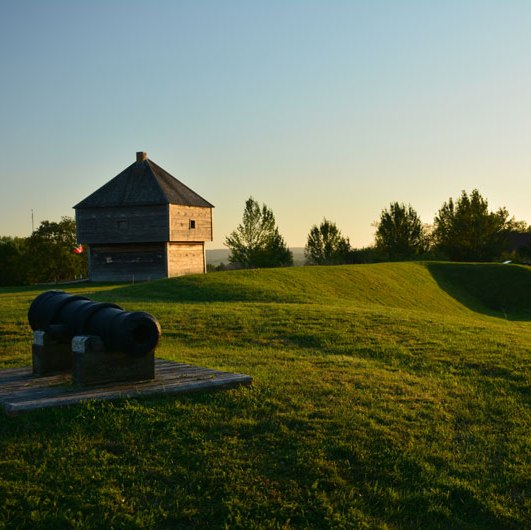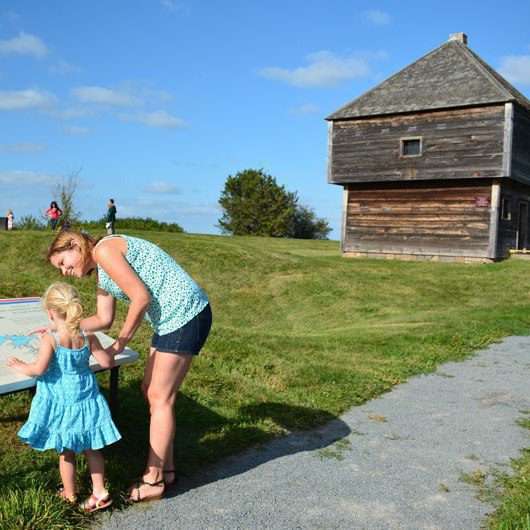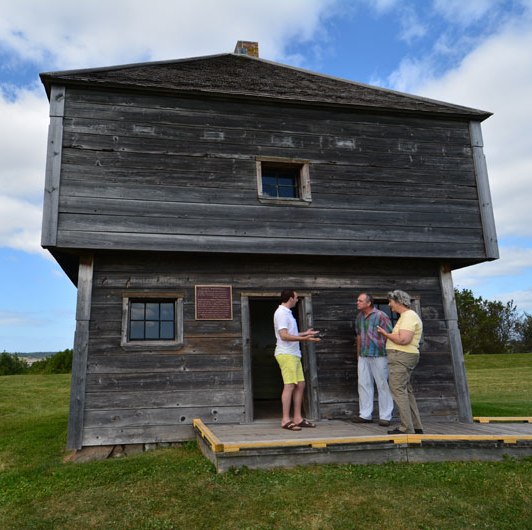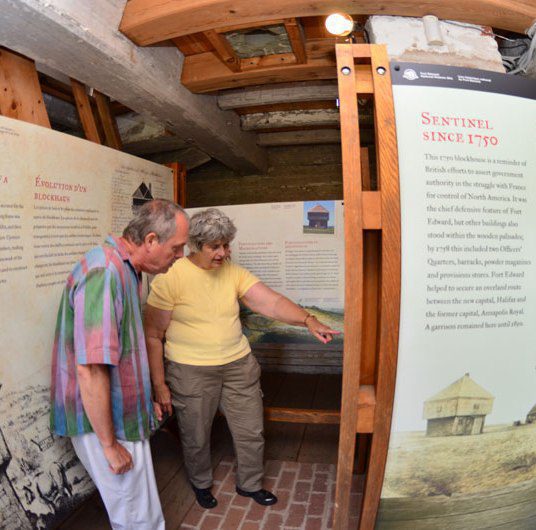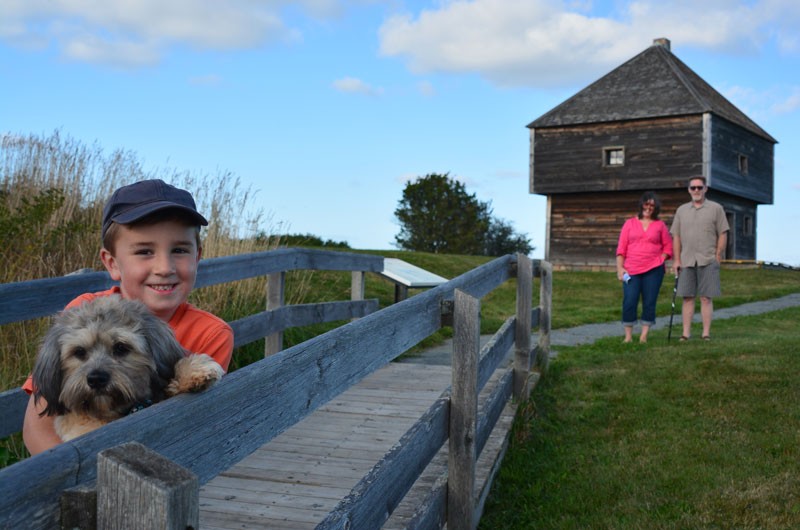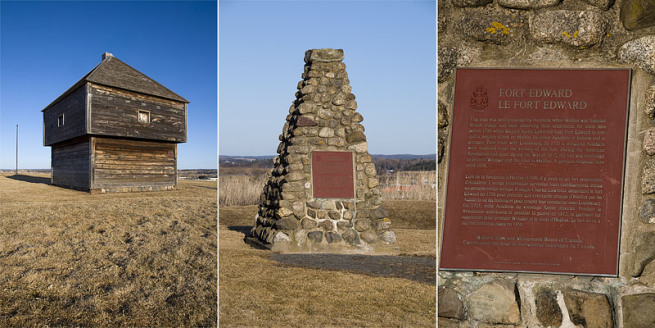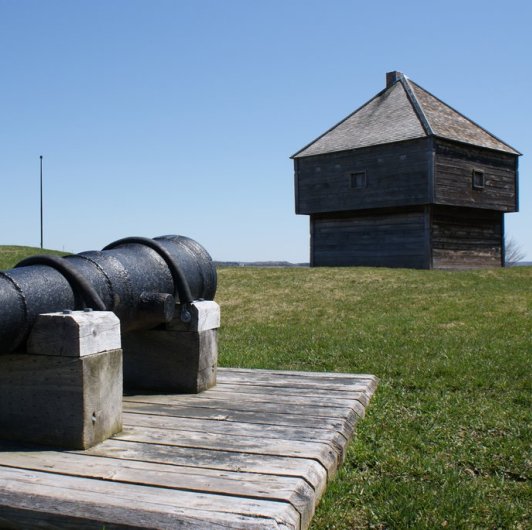
The Blockhouse
Step inside a historic military blockhouse from the mid-1700s, where creaking floorboards, original graffiti and musket slits in the walls evoke the lives of soldiers once stationed here. Take a stroll along the grassy earthworks – the scene of conflict in the tumultuous 18th century.
A National Historic Site since 1921, the Blockhouse is the oldest surviving structure of its kind in Canada and one of the few remaining 18th-century structures in Nova Scotia.
Help us protect this land
We have a page on our website dedicated to our efforts in preserving the land adjacent to Fort Edward. Please click here to read and share!
Historic Earthworks
The Blockhouse is all that remains of historic Fort Edward, connecting present-day Windsor to the richness of Canadian history.
The historic earthworks of Fort Edward make for a relaxing afternoon of exploring. Picnic on a scenic hilltop, walk the perimeter trail, then duck into the nearly 300-year-old blockhouse to see where soldiers were stationed in the 1700s.
The struggle for control of North America during the age of empire still resonates at Fort Edward National Historic Site.
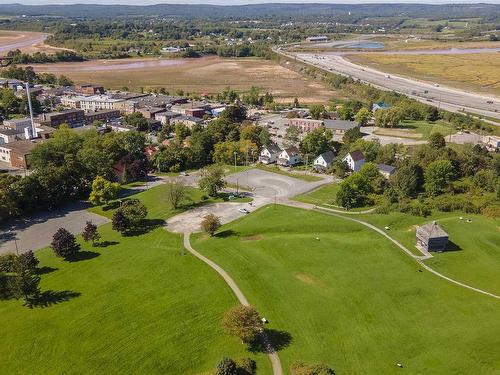
A Brief History
Fort Edward was constructed in June 1750 to secure the overland route between Annapolis Royal, the old capital of Nova Scotia, and the new capital at Halifax, founded in 1749. The British colonial officials also intended the Fort to assert government authority in the Piziquid area, one of the centres of Acadian settlement in the province. As well, Mi’kmaq frequently travelled through the area following the two rivers – the Avon and the St. Croix – that met below the hill on which the fort was constructed.
To read more about the history of Fort Edward, please check out our article here. Also see our Historical Timeline of Fort Edward below.
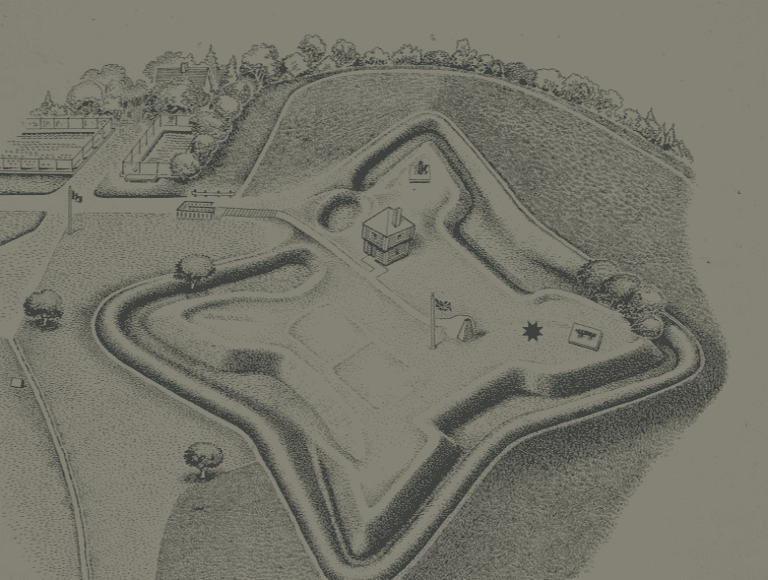
Fees & Facilities
The historic earthworks of Fort Edward make for a relaxing afternoon of exploring, and a must-see addition to your visit to the area.
- No entrance fee (donations welcome)
- Parking available
- Wheelchair accessible
- Picnic area
- Bus tours welcome
- Visitor Centre and Tour Guide (summer only)
- Easy walking trail loops around site
Timeline of Fort Edward Area
Long before 1680
Mi’kmaq
The prominence overlooking the junction of two rivers, known to the Mi’kmaq as Pisiquid, was a gathering place for millennia. It may also be the location of a burying ground. See our article with the Archaeological Assessment Report.
Around 1680
Acadian French
About 1680 Acadian French began to establish farm settlements throughout the area
1722
Parish Church
In 1722, the Acadian French built a parish church on top of the hill.
1750
Fort Edward & Trading Post
Because of its strategic location overlooking this river junction, the British selected the hill
as the location for a fort that they named Fort Edward. The Acadian parish church was dismantled to make way for the blockhouse, and the church was relocated to another site.
Near this time, a truck house (trading post) was established on the west slope of the hill, to trade with local Mi’kmaq and Acadians.
1755
Acadian Deportation
Fort Edward was the site of the deportation of Acadians from the district Pisiquid.
1760
New England Planters
Soldiers from the fort assisted in the settlement of New England Planters in the region.
1760-1763
Acadian Prisoners
Acadian prisoners from Cape Breton, Prince Edward Island and Eastern New Brunswick were held in and round the fort.
With the signing of peace treaties, soldiers at the garrison were able to relocate living quarters, gardens and livestock pens outside the stockade, some on the site of the subject lands.
1765
A farmer’s market and agricultural fair was established on the West slope of Fort Edward
including on the subject lands. This exhibition became the Hants County Exhibition, the longest continuously operating exhibition in North America.
1765-1812
Military Defense
Fort Edward was key to the defense of this region during the American Revolution. For a short time it was the home of Scottish heroine Flora McDonald.
During the War of 1812, companies of soldiers from Fort Edward protected the region from American Privateers
1832
Hants County Militia
The fort became the home garrison of the Hants County Militia.
1914
World War I
With the outbreak of WW1 Fort Edward became a training and debarkation base for the
British (later Canadian) Expeditionary Forces including the 112th and 120th Battalions and the Jewish Legion.
1918
Post-WWI
Following WWI the fort was largely abandoned. All original buildings except the blockhouse were destroyed. The grounds became a local golf course.
1922
National Historic Site Designation
Fort Edward was designated a national historic site under the administration of Parks
Canada.
1967
Adjacent Land Use
Parks Canada transferred the subject lots to the Town of Windsor for public use, including the building of a community swimming pool.
1973
West Hants Historical Society Founded
The West Hants Historical Society was founded with a mandate to promote the restoration and preservation of Fort Edward. The Society continues to provide summer guide service under contract to Parks Canada.
2021
Potential for Land Rezoning
The Hants West Regional Municipality proposed to rezone the land transferred in 1967 to allow a multi-unit housing development.
Today
The West Hants Historical Society is working with the West Hants Municipal Council to reimagine a use for this now vacant land which will attract visitors, interpret our history, and provide recreational opportunities for citizens.

